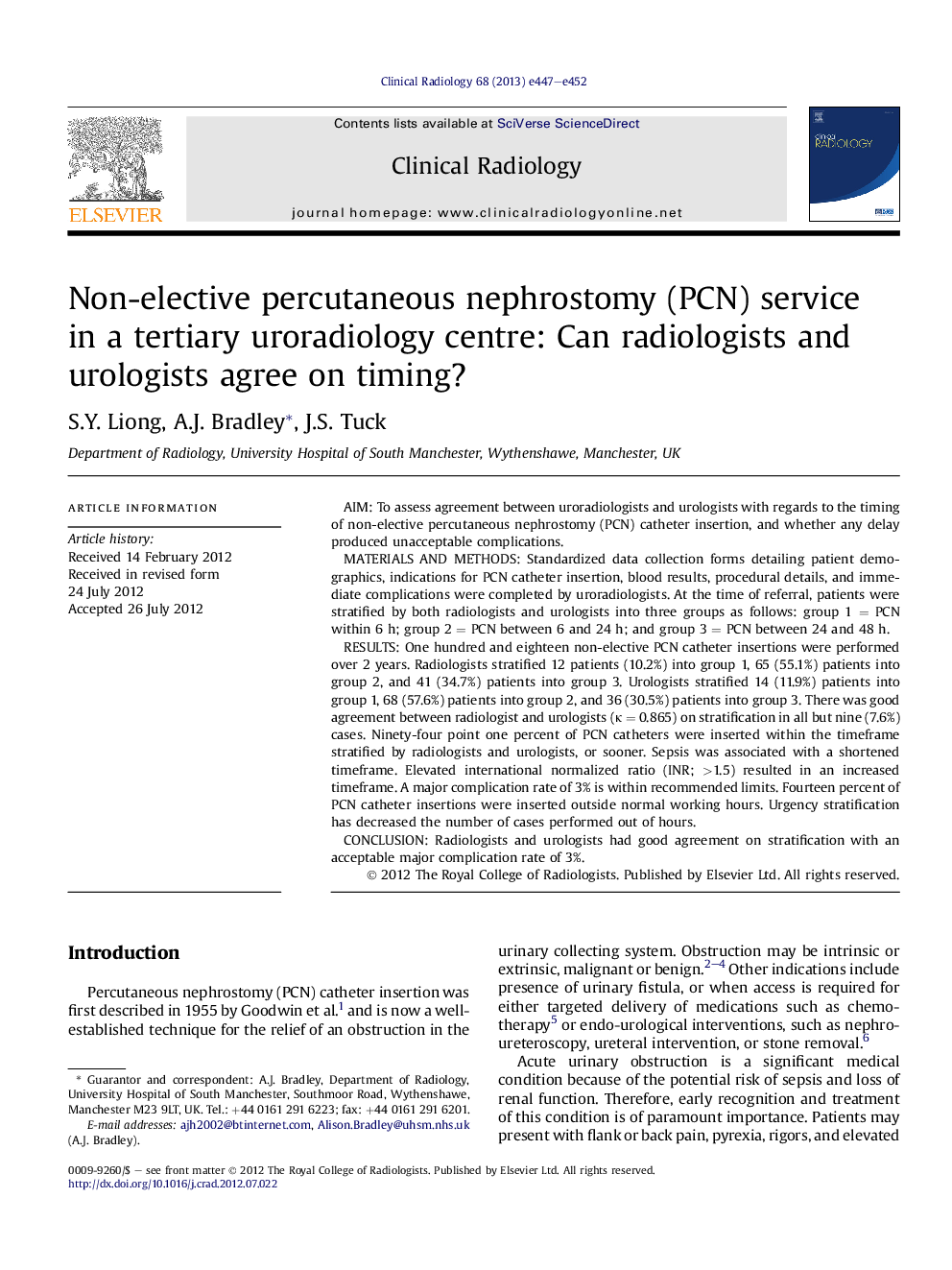| Article ID | Journal | Published Year | Pages | File Type |
|---|---|---|---|---|
| 6190916 | Clinical Radiology | 2013 | 6 Pages |
AimTo assess agreement between uroradiologists and urologists with regards to the timing of non-elective percutaneous nephrostomy (PCN) catheter insertion, and whether any delay produced unacceptable complications.Materials and methodsStandardized data collection forms detailing patient demographics, indications for PCN catheter insertion, blood results, procedural details, and immediate complications were completed by uroradiologists. At the time of referral, patients were stratified by both radiologists and urologists into three groups as follows: group 1 = PCN within 6 h; group 2 = PCN between 6 and 24 h; and group 3 = PCN between 24 and 48 h.ResultsOne hundred and eighteen non-elective PCN catheter insertions were performed over 2 years. Radiologists stratified 12 patients (10.2%) into group 1, 65 (55.1%) patients into group 2, and 41 (34.7%) patients into group 3. Urologists stratified 14 (11.9%) patients into group 1, 68 (57.6%) patients into group 2, and 36 (30.5%) patients into group 3. There was good agreement between radiologist and urologists (κ = 0.865) on stratification in all but nine (7.6%) cases. Ninety-four point one percent of PCN catheters were inserted within the timeframe stratified by radiologists and urologists, or sooner. Sepsis was associated with a shortened timeframe. Elevated international normalized ratio (INR; >1.5) resulted in an increased timeframe. A major complication rate of 3% is within recommended limits. Fourteen percent of PCN catheter insertions were inserted outside normal working hours. Urgency stratification has decreased the number of cases performed out of hours.ConclusionRadiologists and urologists had good agreement on stratification with an acceptable major complication rate of 3%.
